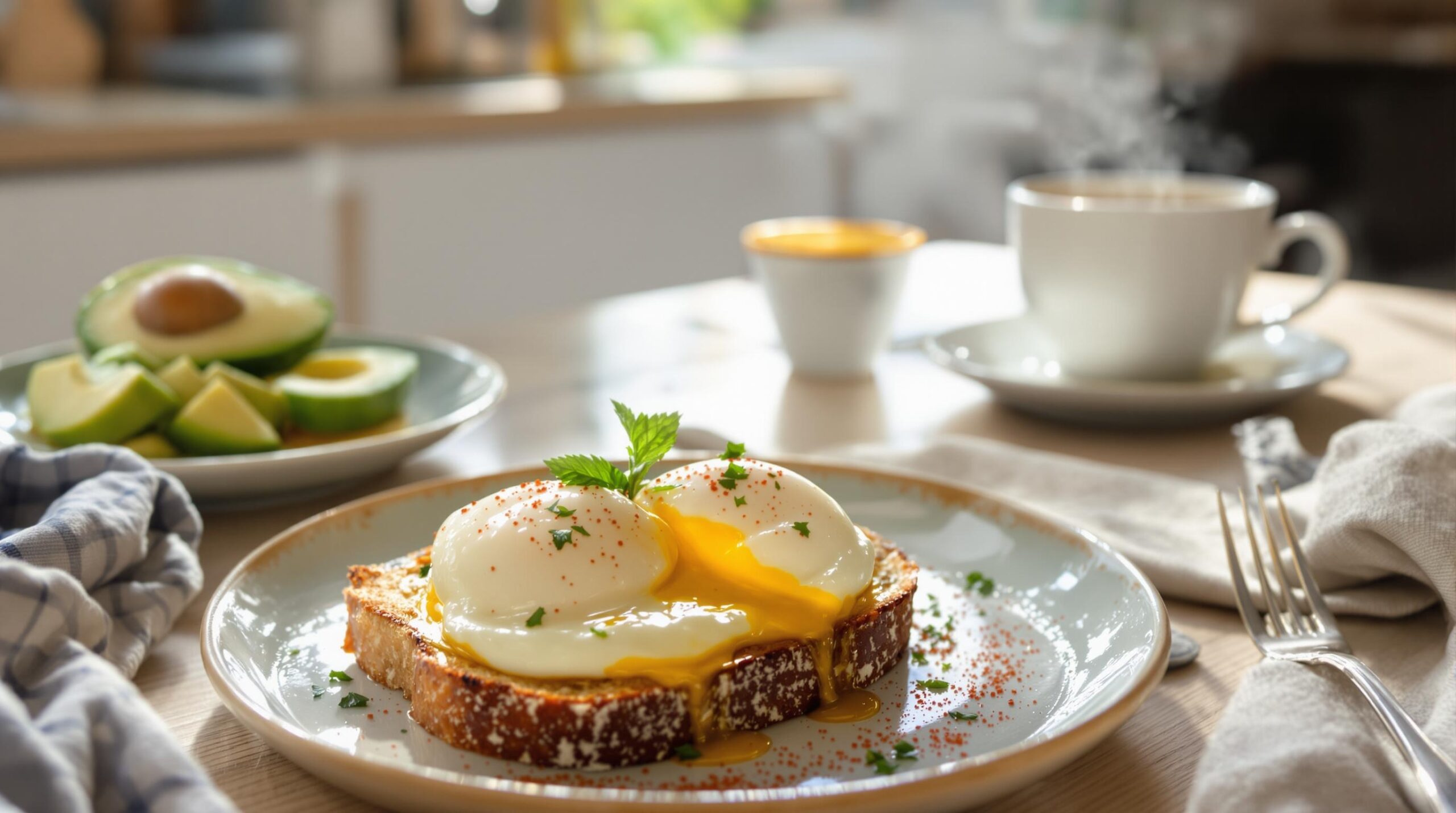Poached eggs often grace the plates of breakfast enthusiasts, adding elegance to morning routines. Their luscious yolks and tender whites bring culinary satisfaction. Achieving perfect poached eggs requires patience, precision, and practice. Following the proper steps can transform breakfast from ordinary to extraordinary.
Why Poached Eggs?
Poached eggs are nutritious and versatile, fitting various breakfast dishes. They contain high protein content, essential vitamins, and healthy fats. Incorporating poached eggs into your breakfast keeps you full and satisfied throughout the morning. Their delicate texture and rich taste appeal to diverse palates, making them a favorite worldwide. Mastering the art of poaching is worthwhile for enhancing your breakfast repertoire.
Selecting Fresh, High-Quality Eggs
Fresh eggs are crucial for successful poaching. Choose high-quality eggs that ensure the yolk remains intact during cooking. Fresh eggs have thick whites, which help maintain shape and achieve desired results. Farm-fresh eggs from local markets often yield the best outcomes due to their superior quality. To test an egg’s freshness, place it in water. Fresh eggs sink while old ones float.
Preparing for Poaching
Preparation is key to consistently creating perfect poached eggs. Gather necessary tools, including a saucepan, slotted spoon, and ramekin. Selecting the right saucepan is vital; ensure it has enough depth for the eggs to float freely. Fill the pan with water and bring it to a gentle simmer. Avoid boiling water, which can lead to harsh whites and uneven results.
Adding Vinegar for Improved Results
Adding vinegar to your simmering water helps achieve ideal poached eggs. Vinegar aids in coagulation, ensuring the whites remain compact. Add one tablespoon of white vinegar per quart of water before simmering. Though vinegar is optional, it provides structural benefits without altering the egg’s taste. If concerned about vinegar’s influence on flavor, rinse eggs gently after poaching.
Creating a Gentle Swirl
A gentle swirl in the water assists in forming desirable poached eggs. Stir the simmering water until a gentle vortex appears. This action helps the egg maintain its shape by wrapping the whites around the yolk. To prevent disruption, avoid adding the egg directly into the center of the vortex. Instead, slowly pour the egg from a ramekin into the swirling water.
Timing: The Key to Perfection
Proper timing is crucial when poaching eggs to achieve the preferred consistency. Cook eggs for three to four minutes for firm whites and soft yolks. A consistently timed approach results in each egg reaching its optimal texture. Use a timer to keep track of cooking duration for improved precision. Longer cook times yield firmer yolks, catering to various taste preferences.
Ensuring a Safe Retrieval
Careful retrieval of poached eggs maintains their delicate structure. Using a slotted spoon, gently lift the egg from simmering water. Allow excess water to drain before placing the eggs onto a paper towel. This step prevents sogginess, ensuring a pleasant dining experience. Handle with care to preserve the egg’s shape and presentation.
Consider Cooling Alternatives
Some may prefer poached eggs that cool slightly before serving. To halt cooking, place eggs in ice water for a minute. This method results in firmer whites while maintaining the desired yolk consistency. Cooling also provides more flexibility in serving, allowing for better timing. Rinse eggs thoroughly to remove any residual vinegar taste and prepare for plating.
Presenting Your Poached Creations
Presentation elevates the appeal of poached eggs, turning breakfast into a delightful experience. Place eggs atop buttered toast, English muffins, or fresh greens. Garnishing options include herbs like chives or dill for added flavor and visual interest. Complement with avocado, smoked salmon, or sautéed mushrooms for a culinary brunch treat. Serving atop a bed of spinach offers a healthy yet flavorful option.
Overcoming Common Poaching Challenges
Avoiding common mistakes improves the poaching technique and results. Uneven or aggressive simmering can disrupt egg structure, resulting in unsatisfactory outcomes. To resolve this, maintain a steady simmer and swirl the water gently. If eggs spread too much, ensure they are fresh and use vinegar in the water. With practice, overcoming poaching challenges becomes manageable.
Experimenting with Poached Egg Dishes
Poached eggs contribute versatility to breakfast menus by pairing well with numerous ingredients. Eggs Benedict is a classic poached egg dish featuring an English muffin, Canadian bacon, and hollandaise sauce. Combine poached eggs with quinoa or couscous for a nutritious, protein-rich meal. The famous dish “shakshuka” incorporates poached eggs in a spicy tomato sauce, offering a flavorful twist. Exploring new recipes can transform simple poached eggs into innovative culinary creations.
Exploring Nutritional Benefits
Poached eggs contribute beneficial nutrients essential for a balanced breakfast. High-quality proteins aid in muscle repair and growth. Lutein and zeaxanthin in eggs support eye health and protect against age-related diseases. B vitamins assist metabolism and overall energy levels throughout the day. Regularly enjoying poached eggs contributes to a well-rounded diet and wellness.
Poached Egg Variations and Innovations
Innovative techniques enhance poached egg presentation and taste. Opt for non-traditional poaching methods like using an immersion circulator for precision cooking. Experiment with flavors by infusing poaching water with aromatic herbs or spices. Consider serving on innovative bases such as sweet potato hash or polenta squares. Creative twists ensure poached eggs never become monotonous, catering to evolving tastes.
Embarking on the Poaching Journey
Taking on the challenge of poaching eggs transforms breakfast into a rewarding culinary endeavor. The process of mastering this delicate dish involves developing new skills. Gaining confidence in the poaching technique offers consistent success and enjoyable results. Each poached egg created strengthens your confidence and culinary repertoire. Through patience and perseverance, anyone can become adept at crafting the perfect poached egg.
Conclusion: The Delight of a Perfectly Poached Egg
Crafting perfectly poached eggs involves skill, attention, and experimentation. Fine-tuning poaching techniques ensures breakfast becomes a delightful and memorable experience. Achieving mastery enriches your culinary journey, making morning meals an artistic expression. As you refine your poaching abilities, savor the satisfaction of each perfect egg. Embrace the journey of creating exquisitely poached eggs, making every breakfast an enchanting delight.

